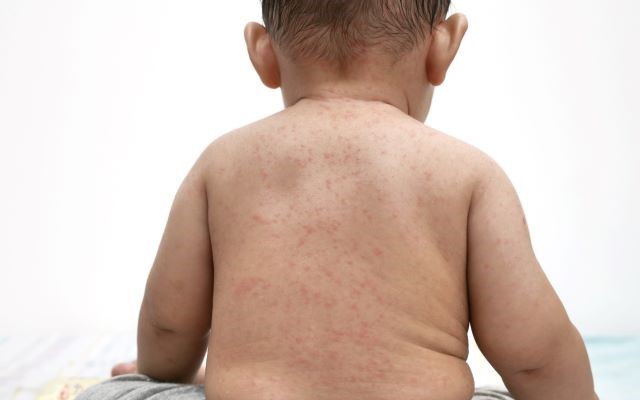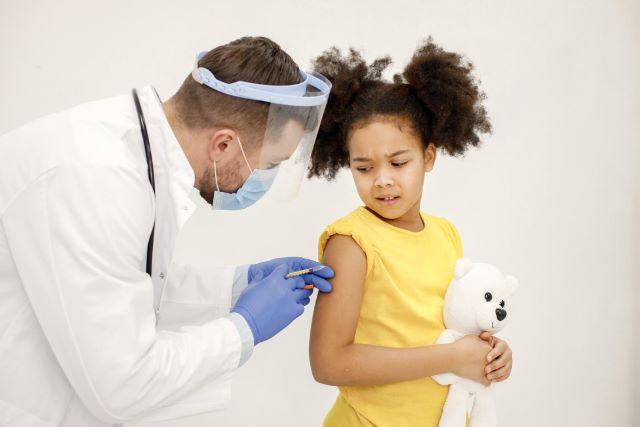GLOBAL MEASLES CASES ARE ON THE RISE, WHAT IS THE ROOT CAUSE?
The World Health Organization (WHO) and the US Centers for Disease Control and Prevention (CDC) have reported a concerning surge in global measles cases, which increased by over 20% in 2023 to an estimated 10.3 million. The rise in infections has led to approximately 107,500 deaths, mostly among young children—an “unacceptable” toll, according to health officials. As global measles cases are on the rise, what is the root cause?

The root cause: Lack of vaccination coverage.
The root cause of the outbreak is a significant decline in vaccination coverage, which has made it harder to control the disease. Measles, a highly contagious virus, can lead to severe health complications, including blindness, brain damage, and pneumonia. It is preventable with two doses of the measles vaccine, which is 97% effective when administered correctly. Despite the availability of this life-saving vaccine, global vaccination rates have dropped, especially in the wake of the COVID-19 pandemic. The pandemic caused widespread disruptions to routine immunization programs, resulting in millions of missed vaccinations.
In 2023, around 83% of children received their first measles vaccine dose, but only 74% received the second, which is critical for full protection. This left over 22 million children unvaccinated, exacerbating the risk of measles outbreaks. In the United States, the decline in vaccination coverage among kindergartners has been particularly concerning. The measles vaccination rate for US kindergartners fell to 92.7% in the 2023-24 school year, below the federal target of 95%, which is necessary to maintain “herd immunity.” As of November 2024, the US has already reported 266 measles cases, with 16 active outbreaks.

“Measles vaccine has saved more lives than any other vaccine in the past 50 years,” WHO Director-General Dr. Tedros Adhanom Ghebreyesus said in an interview with CNN.com. “To save even more lives and stop this deadly virus from harming the most vulnerable, we must invest in immunization for every person, no matter where they live.”
This lack of vaccination coverage has led to a sharp rise in measles outbreaks worldwide. In 2023, 57 countries reported large outbreaks, a significant increase from 36 in the previous year. Nearly half of these outbreaks were in Africa, where access to vaccines is often limited. The WHO notes that while there was an 8% decrease in measles-related deaths compared to 2022, this was largely due to better healthcare access in certain regions, rather than any reduction in the virus’s severity.

Measles remains a major global health challenge, especially for children with weakened immune systems due to malnutrition or other diseases. Experts warn that without urgent action to boost vaccination coverage, more children will die needlessly from this preventable disease. WHO Director-General Dr. Tedros Adhanom Ghebreyesus emphasized the importance of continued investment in immunization programs, stressing that vaccines are among the most effective tools in saving lives globally.
“I think we have a very short memory of what it is like to hold a child who has been paralyzed with polio or to comfort a mom who’s lost her kid from measles,” Cohen said while speaking at the Milken Institute’s Future of Health Summit. “We need to remember that the reason we have these childhood vaccines is to make sure that we are the strongest, the healthiest that we can be as a community.”

Measles symptoms in children are similar to those in adults, but due to their developing immune systems, children may experience more severe symptoms and complications. Here’s a breakdown of the common symptoms of measles in children:
Early Symptoms (2-4 days after exposure): high fever, cough, runny nose, sore throat, red, watery eyes (Conjunctivitis), Koplik Spots
Rash (3-5 days after the first symptoms): The rash begins a few days after the initial symptoms. It typically starts at the hairline, spreading to the face, neck, and upper body, and eventually moves down to the arms, legs, and feet. The rash consists of red, blotchy spots that may merge into larger patches. As the rash develops, the fever usually worsens, and the child may feel very ill. The rash typically lasts 5-6 days and fades as the fever goes down.
Other Symptoms: fatigue and weakness, loss of appetite, generalized discomfort
Complications in Children: pneumonia, encephalitis, and diarrhea. Severe effects include blindness and weakened immune systems.
Early vaccination with the measles-mumps-rubella (MMR) vaccine is the best way to prevent these severe outcomes.